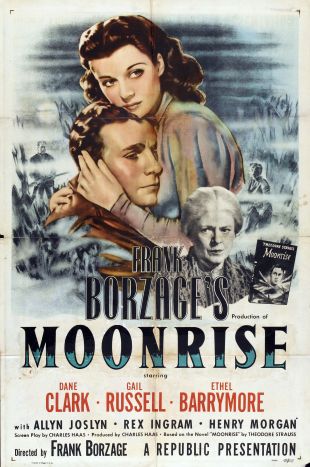By rights, B-movie director Charles Haas should have a cult following, as the maker of such delightfully trashy films as Girls' Town, The Beat Generation, The Big Operator, and Platinum High School. For devotees of the cheap, the lurid, and the tawdry in Hollywood cinema, Haas has a solid record of achievement -- "psychotronic" movie buffs can count many a moment of delight in Haas' output. Yet he doesn't enjoy any reputation, and is something of a cipher in the world of B-movies. Part of this may be the result of Haas' lack of a real "style." In terms of pacing and exposition, the movies for which he is most famous don't unfold so much as they careen along like cars in an auto race (or, in their wildest sequences, like cars in a demolition derby); but that's an essential attribute of the movies themselves. If a film such as Girls' Town were paced more like "normal," mainstream films, it would run the risk of allowing audiences to stop and think about the absurdity of well-endowed 26-year-old Mamie van Doren playing a juvenile offender, or the ridiculousness of 34-year-old Mel Torme as a punk car thief, and there would go whatever willing suspension of disbelief the movie engendered in the first place; thus, their breakneck pacing and lack of dramatic subtlety is intrinsic to their existence as well as their allure. Part of the appeal of Haas' work and career is that it takes a certain kind of director, fearless or perhaps shameless, to go forward with casting like that in Girls' Town. Aficionados of such films should love the director for his sheer audacity.
Haas' lack of reputation may also be a result of the unorthodox way in which he became a director, moving up from bit actor to assistant director to writer/producer in feature films, and then jumping into the then-new medium of television before returning to features. Indeed, Haas may well have been among the very first directors to make the jump from television to feature films. Born in Chicago in 1913, the Harvard-educated Haas went out to Hollywood after graduation, where he landed some work as an extra at Universal. He appeared in a small role in one Paramount release, Wesley Ruggles' comedy I Met Him in Paris (1937), starring Claudette Colbert, but he was principally based at Universal and, by 1937, had become an assistant director at the studio. He soon shifted his career to the making of documentaries and industrial films, experience which served him well during World War II -- he spent the war working in the U.S. Army Signal Corps, making training films. Haas returned to Universal after the war and his first credit was as the associate producer on the low-budget thriller Her Adventurous Night, directed by John Rawlins. He was soon elevated to producer and writer on Frank Borzage's film noir Moonrise (1948), a major production at the time (but which also proved a commercial disappointment). Following its release, Haas returned to making industrial films, and then went to work in television. At the time, the new medium had precious little experienced talent to draw on, and Haas moved up to the director's chair in short order. It was from there, working on such series as Broken Arrow (based on the 1950 feature film starring James Stewart), that he returned to movies as a director, turning in a pair of good little B-Westerns, Showdown at Abilene and Star in the Dust, both in 1956. The latter was particularly important, beyond its merits as a movie, for bringing Haas into the orbit of producer Albert Zugsmith. In 1959, Haas' film career took a sharp upward leap when he began directing a series of movies for Zugsmith. The producer had enjoyed a massive hit with High School Confidential (1958), an exploitation movie dealing with high school students and drugs that was directed by Jack Arnold; but he'd subsequently lost the services of Arnold and, instead, engaged Haas to direct the follow-up movies: Girls Town, Platinum High School, The Big Operator, and -- the most delightfully sleazy of them all -- The Beat Generation. The latter movie had absolutely nothing to do with William Burroughs, Neal Cassidy, Jack Kerouac, et al.; rather, its plot concerned a hunt by the police for a serial rapist who, as it turns out, spends his time in a Southern California beatnik community. It is to Haas' credit that he could transform material like this into a finished film; most directors of the period might well have balked at the project after reading the script. Haas wasn't Jack Arnold's equal -- none of the movies that he made for Zugsmith have the smoothness or the mix of good acting and terrible lines that Arnold made so spellbinding in High School Confidential -- but he also often had far worse scripts to deal with than Arnold did, as well as poorer overall casts to work with; but he persevered to get those pictures made, to the delight of B-movie and exploitation film buffs for decades since. Indeed, among creators of 1950s screen iconography, Haas could take credit for directing most of the movies on which Mamie van Doren's lingering reputation as a screen sex-goddess is based. He gave up making features after 1960 and returned to television, where he directed pilots for Universal and episodes of G.E. Theatre, The Man From U.N.C.L.E. at MGM, and several notable installments of The Outer Limits for United Artists, including "Cold Hands, Warm Heart," starring William Shatner and Geraldine Brooks, and "Keeper of the Purple Twilight," starring Warren Stevens and Robert Webber. The director was sometimes billed as Charles F. Haas in some of his credits. He retired after the 1960s, and should not be confused with the screenwriter/actor of the same name whose career is associated with the movies Tex, Tron, Gremlins 2, and Matinee.


